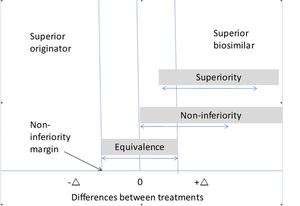In Brazil, the registration of new drugs is carried out only when the regulatory agency (Agência Nacional de Vigilância Sanitária, Anvisa) is fully satisfied with their quality, efficacy and safety. Likewise for biosimilars it is necessary that the biosimilar be equally effective and safe and without contaminants in relation to the originator medicine.
- INICIO
-
Genéricos
Novedades
- FDA approves generic teriparatide and levetiracetam
- US generics launch and approval for Dr Reddy’s and Lupin
- Five Chinese companies join UN’s MPP for Covid-19 medicines
- South Korean companies to make generic Bridion and COVID-19 drugs
Investigación
- Japan’s drug shortage crisis: challenges and policy solutions
- Saudi FDA drug approvals and GMP inspections: trend analysis
- Generic medications in the Lebanese community: understanding and public perception
- Community pharmacists’ understanding of generic and biosimilar drugs: Lebanon case study
General
- Crecimiento de medicamentos genéricos en Brasil y Venezuela
- EMA launches European shortages monitoring platform to tackle persistent medicine shortages
- Penetración de los medicamentos genéricos en México y Brasil
- FDA releases one-year progress report for the Generic Drug Cluster
-
Biosimilares
Novedades
- FDA approves aflibercept biosimilar Eydenzelt and label expansion for adalimumab biosimilar Yuflyma
- ANVISA aprueba cuatro biosimilares para denosumab, trastuzumab y aflibercept
- Biosimilars referencing Amgen’s Neulasta and Neupogen launch in Canada and US
- La EMA recomienda la aprobación de nueve biosimilares
- MORE EDITORIAL SECTIONS
- Search








 0
0












Post your comment